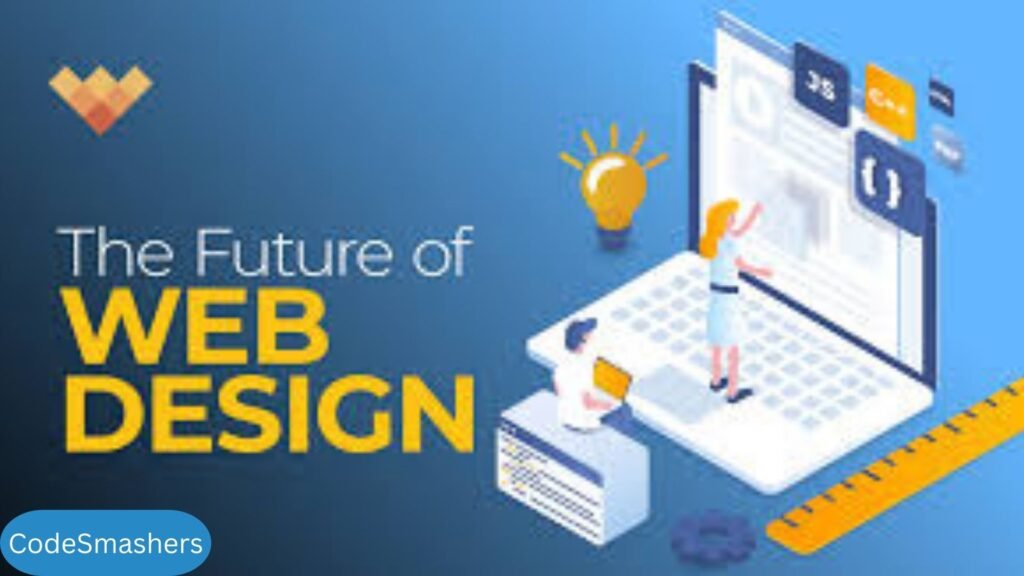The Future of CSS and Why It Matters
In the rapidly evolving world of web design, staying ahead of the curve is more important than ever. CSS (Cascading Style Sheets) has been an essential tool for web developers, UX designers, and front-end designers. But CSS advances in step with technology. This blog post examines the state-of-the-art CSS advancements that will influence web design in the future. Understanding these cutting-edge features and technologies is essential for building responsive, user-friendly websites, regardless of experience level with CSS.

The Evolution of CSS
CSS has evolved significantly since its debut. Initially, it provided basic styling capabilities, allowing web developers to separate content from design. Over time, CSS has evolved to include powerful layout tools, animations, and responsive design techniques. This evolution has significantly enhanced the user experience and made web development more efficient. Today, CSS continues to adapt to the needs of modern web design, incorporating new features and technologies that pave the way for the future.
Key Trends in Advanced CSS Techniques
Grid Layouts and Flexbox
Grid layouts and Flexbox have revolutionized web design by providing more flexible and efficient ways to create complex layouts. Grid allows developers to define rows and columns, making it easier to align elements precisely. Flexbox, on the other hand, offers a one-dimensional layout model that simplifies the process of creating responsive designs. Together, these tools are indispensable for modern web design.
CSS Variables
Custom properties, sometimes referred to as CSS variables, let developers reuse values across style sheets. This feature promotes consistency and simplifies maintenance by allowing updates to be made in one place. For example, changing a color scheme or font size can be done quickly and efficiently with CSS variables, making them a valuable addition to any web developer’s toolkit.
CSS Grid and Subgrid
The CSS Grid layout module has already transformed how we build web layouts, offering a two-dimensional system for creating intricate designs. The subgrid allows nested grids to inherit the grid settings of their parent elements. It is through this feature that CSS Grid is considerably more powerful and flexible, allowing for ever more intricate and adaptable designs.
Responsive CSS for Modern Web Development
Responsive web design is no longer an option; it’s a must. Developing websites that are responsive to many screen sizes and devices is essential due to the growing diversity of gadgets. CSS offers several tools and techniques for a responsive design, ensuring your website looks great on any device.
Media Queries
Media queries are also an important component of responsive web design. They allow developers to apply different styles based on the device’s unique features, such as screen size, resolution, and orientation. Media queries can create a flexible design that adjusts to various screen sizes, enhancing the user experience.
Viewport Units
Viewport units, such as vw (viewport width) and vh (viewport height), offer an adaptive method to size elements relative to the viewport dimensions. This approach ensures that components scale proportionally across different devices, creating a consistent and responsive design. Viewport units are especially beneficial for fluid typography and full-screen layouts.
Responsive Typography
Responsive typography is essential for readability and user experience. CSS provides several techniques for creating scalable text that include viewport units, relative units (EM and REM), and fluid-type scales. By implementing responsive typography, you can ensure your text remains legible and visually appealing across all devices.
Emerging CSS Technologies and Their Impact
CSS Houdini
With the help of CSS Houdini, developers may expand the possibilities of CSS, creating previously unattainable, unique, and interactive experiences. It allows the creation of custom CSS properties, enabling more advanced and dynamic designs. CSS Houdini permits the developers to extend the capabilities of Cascading Style Sheets, resulting in unique and interactive experiences that were previously impossible.

CSS-in-JS
CSS-in-JS is a modern approach to styling in which CSS is written within JavaScript files. This technique offers several advantages, such as better integration with JavaScript frameworks, improved performance, and enhanced maintainability. CSS-in-JS has grown in popularity among web developers thanks to libraries such as Styled Components and Emotion.
CSS Variables and Custom Properties
CSS variables, also called custom properties, allow developers to again use the values throughout their style sheets. This feature promotes consistency and simplifies maintenance by enabling updates to be made in one place. More adaptable and customized designs are made possible by the support for dynamic theming provided by custom properties.

The Role of CSS Frameworks in Frontend Web Development
CSS frameworks have become an integral part of modern front-end development, providing pre-designed components and styles that streamline the development process. Frameworks like Bootstrap, Foundation, and Tailwind CSS offer a wide range of tools and utilities that help developers create responsive and visually appealing websites quickly.
Bootstrap
Bootstrap is one of the most popular CSS frameworks, offering a comprehensive set of components and utilities for building responsive websites. Its grid system, pre-styled components, and extensive documentation make it a choice for many developers.
Foundation
Foundation is another powerful CSS framework that provides a flexible grid system and customizable components. It emphasizes accessibility and mobile-first design, making it an excellent choice for creating inclusive and responsive websites.
Tailwind CSS
Using a unique approach, Tailwind CSS provides utility-first classes that let developers make custom designs without having to write custom CSS. This approach promotes consistency and efficiency, enabling developers to create highly responsive and personalized designs.
Practical Tips for Implementing Advanced CSS Techniques
Use CSS Preprocessors
CSS preprocessors like Sass and Less offer additional features and functionality that enhance the capabilities of CSS. They provide variables, nesting, and mixes, allowing for more organized and maintainable style sheets.
Optimize for Performance
Performance is a critical aspect of web design. Techniques like modification, code splitting, and lazy loading can help you ensure your CSS is optimized. These procedures improve loading times and minimize file sizes, which enhances the user experience.
Keep Up with CSS Requirements
CSS is an evolving standard, with new features and specifications regularly introduced. Staying updated with the latest developments ensures you can leverage the full potential of CSS in your projects. Follow industry blogs, participate in web development communities, and experiment with new features to stay ahead of the curve.
CSS and Accessibility
Accessibility is a crucial consideration in web design. CSS plays a significant role in creating accessible websites by providing tools for enhancing readability, navigation, and interaction. You may design inclusive and user-friendly experiences by utilizing CSS capabilities and adhering to best practices.
Focus on Contrast and Readability
Providing adequate contrast between text and background colors improves readability for all users. Use CSS to specify color combinations that meet accessibility guidelines, making your content more accessible to individuals with visual impairments.
Implement Skip Links and Landmarks
Skip links and landmarks improve navigation for users who rely on screen readers or keyboard navigation. Use CSS to style these elements, making them visually apparent and easy to use. These links and landmarks enhance the accessibility and usability of your website.
Use CSS for Responsive Accessibility
Responsive design and accessibility go hand in hand. Ensure your CSS accommodates different devices and screen sizes while maintaining accessibility features. To guarantee a flawless experience for every user, test your designs using various assistive technologies.

The Future of CSS and Web Development
CSS has a bright future ahead of it, as continuous advancements and innovations shape the web development landscape. Emerging technologies like CSS Houdini, CSS Grid, and custom properties push the boundaries of what is possible, enabling developers to create more dynamic and interactive experiences. By staying informed and implementing these new features, you can position yourself at the forefront of web design.
Conclusion
CSS is an essential tool for modern web development, offering powerful features and techniques that enhance the user experience. By understanding and implementing the latest advancements in CSS, you can create responsive, accessible, and visually stunning websites. Stay curious, experiment with new technologies, and continue to refine your skills to stay ahead in the ever-evolving world of web design.
If you’re ready to take your web development skills to the next level, consider exploring advanced CSS techniques and integrating them into your projects. The future of CSS is here, and it’s time to create exceptional web experiences that captivate and engage your audience.
Remember, the possibilities with CSS are endless. Keep experimenting, learning, and pushing the boundaries of what can be achieved with this versatile and powerful language. Happy coding!

